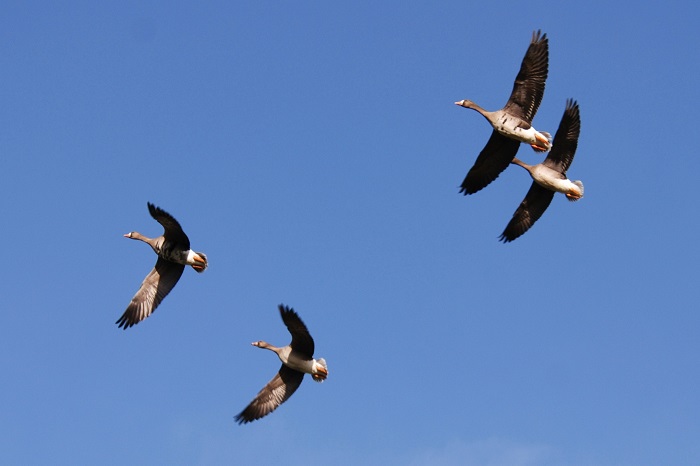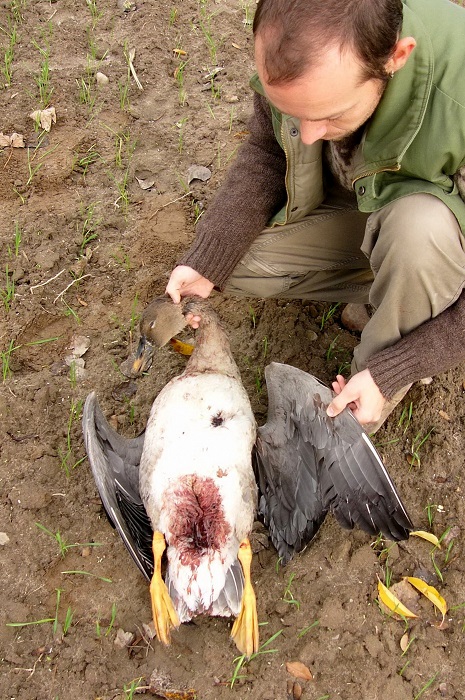Guns raised to the flying flocks

Central Europe is one of the most important wintering areas for wild geese and other water birds in Eurasia. Greylag geese from Scandinavia, White-fronted and Bean geese from the Siberian tundra and more than 20 species of ducks use the lowlands between the Oder and the English Channel as a resting place over winter. Particularly in the early winter months, millions of water birds gather in the large protected areas of eastern Germany - almost the entire Eurasian population make a stopover here.
The birds need large lakes and rivers for roosting at night, while during the day they search for food on harvested fields, pastures and meadows. Especially the flight to and from the sleeping waters at dusk is a breathtaking spectacle.
What for some is a fantastic natural spectacle, for others it is a prey! Hunters position themselves behind bushes or in ditches close to the roosting waters and wait for the birds. When the birds return in the evening or leave in the morning, the low flying birds flying are shot at. The geese, which often fly together with cranes, are bombarded with scattered shot loads of highly toxic lead - often other protected species are also 'accidentally' or intentionally taken from the sky. Later - often only after several weeks - the animals die of lead poisoning and infection. Many birds that fall into the reeds only a few metres from the hunters are needlessly left for dead and simply forgotten. Officially, Germany's hunters shoot between 50,000 and 80,000 geese and about half a million ducks a year.

Unfortunately, in many cases the ignorance is not limited to the topography of the district. While German hunters can distinguish a deer from a boar, with migratory birds the expertise usually quickly evaporates. The Bean Geese and Lesser Whitefronts flying amongst flocks of the more common species can only be identified by experienced ornithologists with the best visibility. The duck species can barely be distinguished from one another during hunt in the twilight. Many hunters interviewed during our inspections were not able to distinguish greylag geese from white-fronted geese - even if they lay dead on the ground in front of them!
CABS has been defending our position against these unsustainable conditions for years with increasing success. Since 1997 we have monitored hunting restrictions in the large protected areas of Saxony-Anhalt, Mecklenburg-Western Pomerania and Brandenburg. Every weekend, CABS members are on site and check the known roosting areas of the migratory birds. In recent years, we have reported well over 100 hunters often temporarily stopped large organised hunts with the help of the police.
In some areas along the Elbe in Saxony-Anhalt and in the area of the Havel lowlands in western Brandenburg, the situation has largely calmed down as a direct result of our presence.






